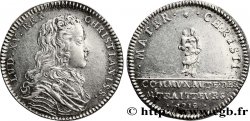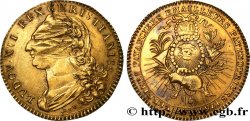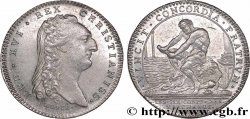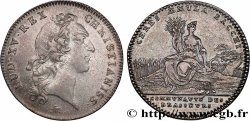fjt_048699 - CORPORATIONS n.d.
Not available.
Item sold on our e-shop
Price : 73.18 €
Item sold on our e-shop
Price : 73.18 €
Date: n.d.
Metal : silver
Diameter : 31 mm
Orientation dies : 6 h.
Edge : cannelée
Rarity : R1
Coments on the condition:
L’aspect général n’est pas agréable mais le jeton semble être “né” ainsi car il ne présente pas d’usure à proprement parler
Catalogue references :
Obverse
Obverse legend : LUDOVICUS. XVI. REX. CHRISTIANISS.
Obverse description : Buste de Louis XVI inédit signé DUVIV. [type n° 379].
Obverse translation : Louis XVI, roi très chrétien.
Reverse
Reverse legend : VINCIT. CONCORDIA. FRATRUM ; À L'EXERGUE : LES. SIX. CORPS. DES. MARCHANDS.
Reverse description : Hercule assis à droite sur la peau de lion essaie de rompre un faisceau. Devant lui, les navires des corps des marchands, derrière, un autel.
Reverse translation : La concorde entre frères est victorieuse.
Commentary
Cet exemplaire semble avoir eu un laminage très mal fait ou avoir subi une très forte chaleur. On peut raisonnablement le dater du début de la Révolution où certains jetons présentent un aspect curieux, tant pour le métal que pour la surface. Ce jeton marque l'application de l'édit d'août 1776 qui agrégea les six corps désormais fixés dans cet ordre : 1. Draperie Mercerie. 2. Epicerie. 3. Bonneterie, Pelleterie, Chapellerie. 4. Orfèvrerie, Batteurs d'Or, Tireurs d'Or. 5. Fabricants d'étoffes, tissutiers-rubanniers. 6. Marchands de Vin. Cet exemplaire ne porte pas de date, le buste est inédit au Guéant Prieur.








 Report a mistake
Report a mistake Print the page
Print the page Share my selection
Share my selection Ask a question
Ask a question Consign / sell
Consign / sell
 Full data
Full data



